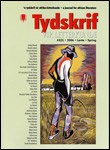’n Nuwe gedig van Sappho
DOI :
https://doi.org/10.4314/tvl.v43i2.29742Mots-clés :
Sappho, ancient Greek lyric poetry, old age, papyrus cartonnageRésumé
The publication in 2004 of twenty-six lines of verse by the ancient Greek poet Sappho solves several questions surrounding Fragment 58 Lobel-Page, based on a papyrus dating from the 3rd century A.D. and published in 1922. This papyrus preserved only the righthand side of a poem or poems. The new discovery, on the papyrus cartonnage of a mummy at the University of Cologne, dates from the 3rd century B.C., contains the oldest Sappho text to date and offers what is virtually the lefthand side of one poem and some lines of two other poems. From the integration of the two texts an entire new poem of 12 lines has been recovered. The two papyri were written about 500 years apart – an indication of the sustained interest in this great poet. The present article gives some of the background on the poetess and the new discovery, and offers an Afrikaans translation and analysis of the new poem. The poem deals with the physical and psychological effects of advancing age, and in its directness and realism recalls Sappho’s Fragment 31 Lobel-Page. To enhance her theme, she uses the mythological example of the dawn- goddess Eos who loved the mortal Tithonus and obtained immortality for him – but without eternal youth. So Tithonus grew ever older while Eos remained young. The example is meant to prove human mortality, and poignantly contrasts Sappho’s situation with that of the young girls in her care.
Téléchargements
Références
...
Téléchargements
Publiée
Numéro
Rubrique
Licence
(c) Copyright Tydskrif vir Letterkunde 2006

Ce travail est disponible sous licence Creative Commons Attribution - Partage dans les Mêmes Conditions 4.0 International.


 https://orcid.org/0000-0001-6465-6584
https://orcid.org/0000-0001-6465-6584


.png)